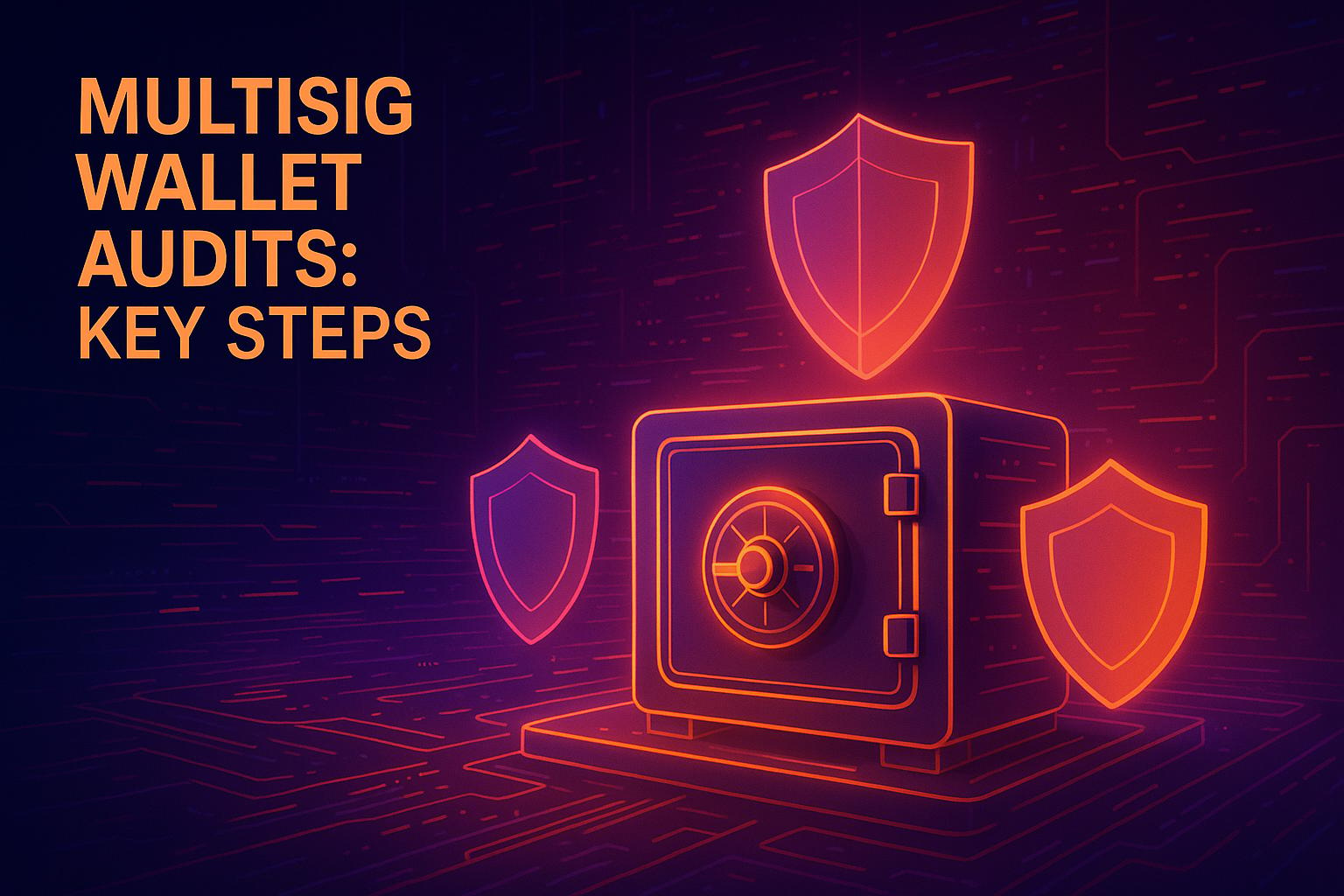Bitcoin struggles with scalability - handling only 7 transactions per second with 10-minute block confirmation times. To address this, two Layer 2 solutions emerged: Lightning Network and Liquid Network. Here's a quick breakdown:
- Lightning Network: Designed for micro-to-small payments, offering near-instant settlement. Best for retail, subscriptions, and micropayments.
- Liquid Network: Built for medium-to-large transfers, completing transactions in about 2 minutes. Ideal for trading, institutional settlements, and private transactions.
Quick Comparison
| Feature | Lightning Network | Liquid Network |
|---|---|---|
| Transaction Size | Micro to small payments | Medium to large transactions |
| Settlement Speed | Near-instant | ~2 minutes |
| Privacy Features | Payment routing privacy | Confidential Transactions |
| Security Model | Trust-minimized, active monitoring | Federated (15 HSMs) |
| Best For | Retail, micropayments | Trading, high-value transfers |
Both networks improve Bitcoin's scalability, but they serve different purposes. Lightning is fast and cost-effective for small payments, while Liquid prioritizes privacy and security for larger transactions.
Bitcoin Layer 2 Basics
Understanding Layer 2 Solutions
Layer 2 solutions work around Bitcoin's base layer limitations by handling transactions off-chain while still relying on Bitcoin's security. These protocols improve Bitcoin's functionality in three main ways:
| Benefit | Description | Impact |
|---|---|---|
| Lower Costs | Groups multiple transactions to cut fees | Enables cost-effective micropayments |
| Faster Speed | Handles transactions off-chain | Settlement times range from instant to 2 minutes |
| Better Privacy | Adds privacy features | Varies depending on the solution |
Up next, we’ll explore how the Lightning Network and Liquid Network tackle these issues with their unique setups.
Lightning Network and Liquid Overview
The Lightning Network and Liquid Network are two distinct tools in Bitcoin's ecosystem, each designed for specific transaction needs [1].
The Lightning Network operates through payment channels where Bitcoin is locked in multisignature addresses. This setup allows for almost instant settlements and supports a high volume of micro to small payments.
On the other hand, the Liquid Network functions as a sidechain, utilizing Liquid Bitcoin (L-BTC). Its standout features include two-minute transaction finality, improved privacy for transaction amounts, and a focus on medium to large transfers. Both networks enhance Bitcoin's usability but in different ways tailored to specific scenarios.
How Lightning and Liquid Work
Lightning Network: Payment Channels
The Lightning Network enables Bitcoin transactions through two-way payment channels. Users lock Bitcoin in a multisignature address, allowing quick exchanges of funds. Only specific transactions - like opening, closing, and anti-fraud measures - are recorded on the blockchain. This reduces congestion while keeping transactions flowing. By March 2019, the network had over 37,000 active channels managing upwards of 764 bitcoins[2].
| Transaction Type | Purpose | Impact on Network |
|---|---|---|
| Channel Opening | Sets up the connection | One-time on-chain transaction |
| Channel Closing | Finalizes balances | Single settlement transaction |
| Anti-fraud Respends | Protects against malicious acts | Safety mechanism |
Now, let’s look at how the Liquid Network takes a different approach.
Liquid Network: Bitcoin Sidechain

The Liquid Network serves as a Bitcoin sidechain, designed for capital markets and private transactions. It relies on Strong Federations - a group of functionaries that sign blocks and oversee the network's activity.
| Feature | Implementation | Timeframe |
|---|---|---|
| Block Generation | Occurs at regular intervals | Every 1 minute |
| Transaction Finality | Provides quick confirmation | 2 confirmations |
| Peg-in Process | Verifies via Bitcoin network | 102 confirmations |
| Peg-out Rounds | Completes the transfer cycle | ~17 minutes |
When Bitcoin is moved to the Liquid Network, it becomes L-BTC, with each unit backed by an equal amount of BTC held by network members. The federation’s multisignature wallet includes a timelock feature, ensuring funds remain accessible even during extended downtimes. Functionary servers use a secure key storage module for added validation, and transactions require approval from over two-thirds of the block signers[3].
Main Uses and Applications
Lightning Network: Small Payments
The Lightning Network is designed for quick, small-scale transactions. Its ability to process payments almost instantly makes it ideal for everyday Bitcoin use, such as retail purchases, online gaming, and streaming services. This network can handle high transaction volumes, making it perfect for applications that demand fast payment processing. On the other hand, Liquid is tailored for handling larger transfers.
Liquid Network: Large Transfers
Unlike the Lightning Network, Liquid is built for medium to large Bitcoin transactions. It's commonly used for institutional trading, moving funds between exchanges, and issuing digital assets. Liquid's Confidential Transactions feature ensures that the amounts and asset types involved remain private. With shorter block intervals than Bitcoin's main chain, Liquid offers a balance between speed and security. It also supports additional digital assets, broadening its use cases.
Industry experts emphasize Liquid's capabilities:
"Liquid allows for medium to large Bitcoin transactions to be undertaken with a high degree of confidentiality and security, and a reasonable degree of speed. This makes it suited to trading and lending applications." [1]
sbb-itb-c977069
Scaling Bitcoin with Lightning and Liquid
Technical Comparison
Let’s dive deeper into how these networks differ in terms of technical performance and security.
Security Approaches
Lightning leverages Bitcoin's security model by requiring co-signed updates for every channel change. However, it demands constant monitoring to prevent potential fraud. On the other hand, Liquid operates on a federated system with 15 Hardware Security Modules (HSMs), requiring a two-thirds majority to maintain the BTC:L-BTC peg. Lightning uses online keys (hot wallets), while Liquid allows offline cold storage and multisig setups, offering added layers of security.
Speed and Capacity Limits
Lightning processes transactions almost instantly, making it perfect for small, frequent payments. Liquid, with its 1-minute block intervals, finalizes transfers in about 2 minutes, better suited for larger transactions. Lightning channels are bound by their initial funding capacity, whereas Liquid imposes no strict size limits within its blockchain's overall capacity (up to 21 million BTC).
Feature Comparison Table
| Feature | Lightning Network | Liquid Network |
|---|---|---|
| Transaction Speed | Near instant | ~2 minutes |
| Block Interval | N/A (channel-based) | 1 minute |
| Transaction Size Limit | Limited by channel capacity | No specific limit |
| Privacy Features | Payment routing privacy | Confidential Transactions |
| Key Storage | Requires online (hot wallet) | Supports offline storage |
| Security Model | Secured by Bitcoin network | Federated (15 HSMs) |
| Confirmation Requirements | Instant within channels | 2 block confirmations |
| Current Transaction Fees | Variable by channel | 0.1 sats/vbyte |
These differences highlight how Lightning and Liquid cater to distinct transaction needs, with each excelling in specific use cases.
Choosing Between Solutions
When to Use Lightning
The Lightning Network is perfect for frequent, small-value transactions. It provides almost instant payments with very low fees, making it a great choice for retail purchases, subscriptions, micropayments, and point-of-sale transactions. This system secures transactions through channel co-signing, but it does require users to maintain active online wallets and keep an eye on their channels.
When to Use Liquid
Liquid is better suited for larger transactions, prioritizing privacy and security. Its features, like Confidential Transactions and support for cold storage, make it ideal for exchange transfers, high-value trades, asset tokenization, and institutional settlements. While its confirmation time is about two minutes - slower than Lightning's instant payments - it offers better privacy without needing to pre-fund channels. However, this setup relies on a federated security model with 15 Hardware Security Modules.
Side-by-Side Comparison
| Aspect | Lightning Network | Liquid Network |
|---|---|---|
| Best For | Retail payments and micropayments | Large transfers and high-value trading |
| Typical Transaction Size | Micro to small payments | Medium to large transactions |
| Key Advantage | Near-instant settlement | Enhanced privacy through Confidential Transactions |
| Primary Users | Merchants and consumers | Traders, financial institutions, and exchanges |
| Security Model | Trust-minimized (requires active monitoring) | Federated model (supports offline storage) |
This table highlights how each network serves different needs. Lightning is the go-to for everyday, small transactions thanks to its speed and cost-effectiveness. On the other hand, Liquid is better for larger transfers where privacy and offline storage are priorities.
When using either solution through BitVault, users gain access to extra security features like time-delayed transactions and multisig services, ensuring a secure and smooth Bitcoin experience.
Conclusion
Lightning and Liquid provide two different ways to improve Bitcoin's scalability, each suited for specific use cases. Lightning is ideal for fast, low-value transactions, while Liquid is better for larger transfers with added privacy.
Lightning uses a trust-minimized payment channel model, allowing quick transfers but requiring active monitoring. On the other hand, Liquid operates as a federated sidechain, confirming transactions in about two minutes and offering offline custody options.
"The Lightning and Liquid Networks are complementary layer-2 solutions that allow Bitcoin to be used for a greater range of applications, and by a greater number of people." - Peter Young, Author [1]
BitVault brings the best of both worlds by integrating these networks. It enables secure, time-delayed, multisig transactions, giving users the flexibility to choose the scaling solution that fits their needs.
As both networks continue to evolve, they open up new possibilities for Bitcoin. Together, they improve scalability, privacy, and functionality, making Bitcoin more versatile for everyone - from individual users to large institutions.




